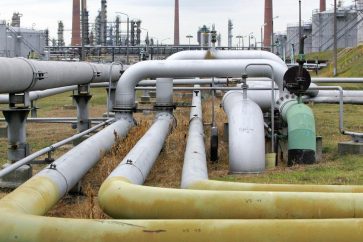World oil prices crept higher Wednesday as traders awaited US crude inventories data, and mulled gloomy supply and demand forecasts which have cast a pall over the market this week.
Oil also edged upwards after US industry body the American Petroleum Institute (API) reported overnight that crude reserves had risen by far less than expected last week, indicating keen demand in the world’s top crude consuming nation.
By 1115 GMT, US benchmark West Texas Intermediate for delivery in October had climbed 24 cents to $45.14 a barrel.
Brent North Sea crude for November delivery won 16 cents to $47.26 a barrel compared with the previous day’s close.
Crude futures had dived Tuesday after the International Energy Agency (IEA) forecast a continuing global supply glut in 2017.
Later on Wednesday, the US government’s Energy Information Administration (EIA) will publish its official report on commercial inventories for the week ending September 9.
“This morning’s bullish price action has been spurred as a result of API data which has shown a smaller than expected stockpile build in the US, with stocks only increasing 1.4 million barrels versus a forecast of 3.8 million barrels,” said analyst Dorian Lucas at energy consultancy Inenco.
“EIA stockpile data is expected later today, which should provide some additional direction to crude oil prices.
“The forecast is for a 2.8-million-barrel build, which if realized should see prices decline intraday.”
Rising US crude stockpiles tend to push prices lower because they indicate weaker demand.
However, hopes for a sustained rebound in demand were dashed this week by fresh warnings a global supply glut would persist for longer than previously thought.
As the market eyed a producers’ meeting later this month for some reprieve, the Paris-based IEA added Tuesday that growth in oil demand was slowing while supply was rising.
The organization reversed its previous projection that stubborn global oversupply would be soaked up by demand in the latter part of 2016.
Instead, it warned that the glut — which has sent prices crashing in recent years — would linger “at least through the first half of next year”.
The news followed a report Monday by the Organization of the Petroleum Exporting Countries (OPEC) predicting that non-member countries would see output rise in 2017, revising its previous expectations of a drop.
“There seems to be no end to the bad news on the oil market,” said Commerzbank analyst Carsten Fritsch.
“Yesterday another shock report came courtesy of the IEA: it now believes that balance will not be restored on the global oil market until mid-2017.
“This is partly due to a combination of two factors: oil demand this year is set to grow by 100,000 barrels per day less than previously thought, while non-OPEC supply is likely to be 100,000 barrels per day higher both this year and next,” he added.
Source: AFP




